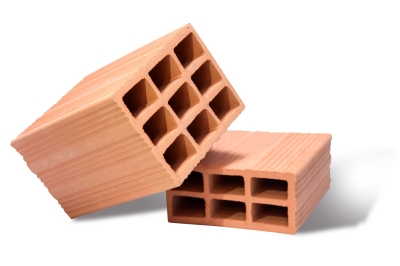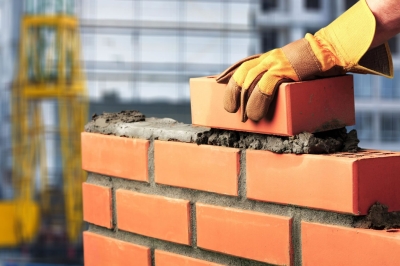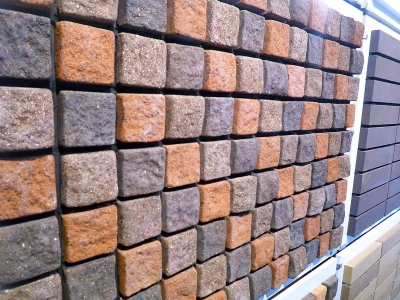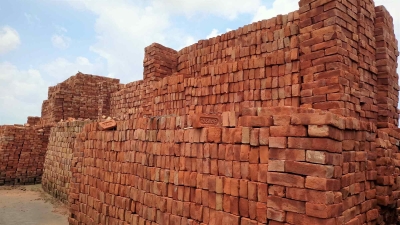One of the main reasons that have attracted so much attention to brick is its unique variety in design, color, dimensions and application. The type of soil and its impurities have a great impact on the price of clay bricks. Brick is a clean natural material that does not affect the environment.
What is a brick?

In the context of construction materials, a brick is a rectangular block that is commonly used in building walls, pavements, and other structures. Bricks are typically made from clay, shale, or a combination of the two, which is then fired in a kiln to harden them. Bricks have been used as a construction material for thousands of years and are known for their durability and strength. They provide excellent thermal insulation and can withstand high temperatures, making them suitable for various building applications.
The standard size of a brick varies among countries, but a common dimension is approximately 9 inches long, 4.5 inches wide, and 3 inches thick (230 mm x 115 mm x 75 mm). Bricks can have different colors, textures, and surface finishes depending on the manufacturing process and the desired aesthetic effect. Bricks are typically laid in courses using mortar, which is a mixture of cement, sand, and water. The mortar bonds the bricks together, creating a solid and stable structure. Different patterns, such as running bond or herringbone, can be achieved by arranging the bricks in specific ways during construction.
What is a brick?, Read More ...
History of brick

The earliest known bricks were made around 7000 BC in the region of modern-day Turkey and the Middle East. These early bricks were made of sun-dried mud or clay and were used to construct simple structures like houses and walls. Bricks played a significant role in the architecture of ancient Mesopotamia (present-day Iraq and parts of Syria, Iran, and Turkey). The Mesopotamians developed new techniques for brick manufacturing, including kiln firing, which produced stronger and more durable bricks. The ancient city of Babylon is renowned for its impressive brick structures, such as the Ishtar Gate.
In modern times, bricks continue to be a widely used construction material, although they have been supplemented and sometimes replaced by other materials such as concrete blocks and steel frames. However, bricks remain popular for their durability, thermal properties, and aesthetic appeal. Bricks made of clay have been used for at least 5,000 years. Apparently, for the first time, it was used to build cities in the Mesopotamia and the Indus Valley in Pakistan. At first, people mixed clay and straw by kicking them to make bricks. Then the prepared mixture was poured into rectangular molds and dried in the sun.
History of brick, Read More ...
What is the use of brick?

Bricks are extensively used in building construction for both residential and commercial purposes. They are used to construct load-bearing walls, non-load-bearing walls, partitions, and facades. Bricks provide structural strength, stability, and durability to buildings. Bricks are used in the construction of pavements, walkways, and pathways. They create a durable and aesthetically pleasing surface that can withstand pedestrian traffic. Bricks are often employed in the construction of retaining walls, which are structures designed to hold back soil and prevent erosion. Bricks provide stability and strength to these walls, allowing them to withstand the pressure exerted by the soil.
Bricks are an ideal material for constructing fireplaces and chimneys due to their ability to withstand high temperatures. The thermal properties of bricks help in retaining heat and preventing the spread of fire. Bricks find applications in the construction of industrial and commercial structures such as warehouses, factories, and office buildings. They offer durability, thermal insulation, and fire resistance, making them suitable for such environments. Bricks are commonly used to build boundary walls and fences around properties. They provide security, privacy, and a solid barrier.
What is the use of brick?, Read More ...
Types of bricks

Clay bricks are the most widely used type of bricks. They are made from clay that is molded and fired in a kiln. Clay bricks can be further classified based on their manufacturing process and properties. Dry-Pressed Bricks are made by pressing clay into molds under high pressure. They have a smooth and uniform texture. Extruded bricks are formed by forcing clay through a die to create a continuous column, which is then cut into individual brick units. They often have holes or indentations, which can reduce weight and improve insulation. Wire-cut bricks are produced by cutting bricks from the extruded clay column using wires. They have textured surfaces and are commonly used for facing or decorative purposes.
Engineering bricks are a dense and strong type of brick used in demanding applications. They have high compressive strength and low water absorption. Engineering bricks are often used in areas requiring resistance to frost, abrasion, and chemicals, such as in basements, manholes, and civil engineering projects. Fire bricks, also known as refractory bricks, are designed to withstand high temperatures without degrading. They are made from refractory clay or materials like alumina, silica, and fire clay. Fire bricks are used in applications such as fireplaces, furnaces, kilns, and chimneys. Hollow bricks have cavities or holes that reduce their weight and improve insulation properties. They can be made of clay or concrete and are commonly used in non-load-bearing walls or partitions.
Types of bricks, Read More ...
The method of making and producing bricks

The type of soil and its impurities have a great impact on the price of clay bricks. Also, in the final stages of baking, if the brick is not at the right temperature, it can cause many diseases. Steps are required to make bricks, which are:
The method of making glazed bricks is not particularly different from ordinary bricks; In the glazed brick, only a surface of the glaze is covered on it. This glaze is made from clay and then it is combined with aluminum oxide to maintain its glassy and polished surface. To glaze the bricks, we must first allow them to dry completely. After drying, the prepared glaze is spread on the surface of the brick and dissolves. After the glaze reaches a certain temperature, it will penetrate into the brick and finally we will have a glazed brick.
The method of making and producing bricks, Read More ...
Advantages of brick

Brick is a clean natural material that does not affect the environment. Bricks are 100% inorganic and absorb moisture better than other materials used in construction. This combination minimizes the risk of mold. Brick is a heavy material that provides the best noise absorption between individual rooms.
- Good insulation
Refractory Brick prevents the waste of energy, which means that the interior of the house heats up later in the summer and prevents cold air from entering the interior in the winter. In fact, bricks are generally very accurate in keeping the heat of the sun and are very suitable for the favorable indoor air. - High resistance and easy maintenance
One of the best features of firebrick is that it becomes much more beautiful over time and doubles the effect of the building. The lasting beauty and high resistance of this type of material make it not require special maintenance or repair. If the Brick is well attached to the facade when installing it, the Brick will remain intact as long as the structure is not destroyed. - No deformation
Bricks are also resistant to excessive pressure. Refractory Brick has a very high resistance to freezing and pressure, and it will not expand or contract when the temperature changes. This type of materials, which are special for the facade of the building, maintain their shape and texture against any weather changes. This is why these types of materials have a long lifespan. As you know, firebricks are compatible with all kinds of facade designs and can be implemented. Refractory bricks can be easily used for buildings above 8 floors. These types of bricks have left the hands of every designer and builder free in the implementation, and in the end, they also lighten the overall weight of the building. - Fire resistant
As its name suggests, Brick is fireproof and has a very high resistance to fire and high heat. The non-flammable and non-combustible nature of this Brick has made it more and more used in the construction industry and apartment building. It also prevents the dangers of fire and the entry of poisons and chemical gases. This Brick is also used for the reconstruction of buildings because it greatly increases the resistance of the facade of the apartment over 20 years. - Flexibility with other materials
Firebricks with different types and functional colors are found in the market, which is suitable for every taste and architectural designer. In addition to their wide range, these bricks are well combined with other building materials and are flexible. - Recyclable and reusable
One of the most valuable features of these materials and in general types of refractory and non-refractory bricks is that they can be easily recycled and reused. They have a very long life and will be lost only with the destruction of the structure or facade. - Has effect and beauty
There are different types of bricks, and random bricks are very stylish and suitable for facade design and execution. In general, bricks have a special beauty and effect that make the facade of the building more impressive. Red Brick and black firebrick also have many fans these days because it makes the exterior of the building look modern and has been welcomed by people more than ever. There are many bricks in different designs and colors in the market that you can easily buy from our collection.








